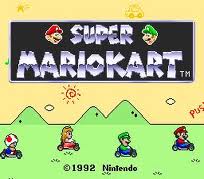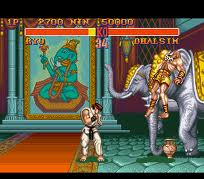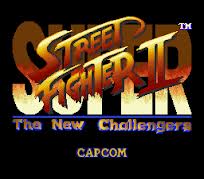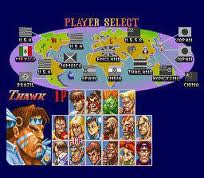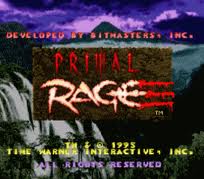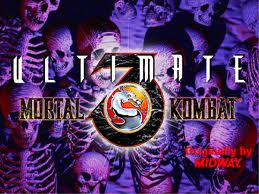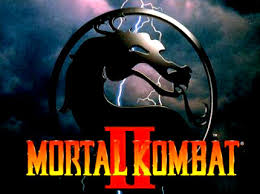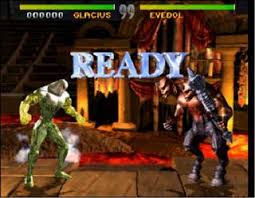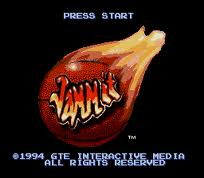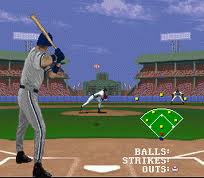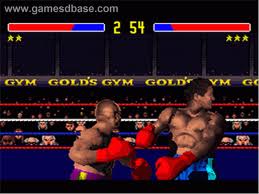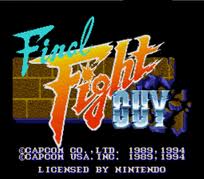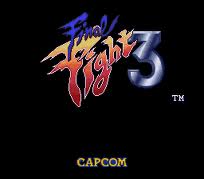Category: 2 Players
47 game(s)A list of 2 player games
Super Mario Kart
Super Mario Kart (スーパーマリオカート, Sūpā Mario Kāto?) is a 1992 go-kart racing video game developed by Nintendo EAD for the Super Famicom (SFC) and the Super Nintendo Entertainment System (SNES). The first game of the Mario Kart series, it was launched in Japan on August 27, 1992, in North America on September 1, 1992, and in Europe on January 21, 1993. Selling eight million copies worldwide, the game went on to become the third best selling SNES game of all time. Super Mario Kart was re-released on the Wii's Virtual Console in Japan on June 9, 2009, North America on November 23, 2009, and in Europe on April 2, 2010.
Street Fighter II: The World Warrior
Street Fighter II: The World Warrior (Japanese: ストリートファイターⅡ -The World Warrior-?) is a competitive fighting game originally released for the arcades in 1991. It is the second entry in the Street Fighter series and the arcade sequel to the original Street Fighter released in 1987. It is Capcom's fourteenth title that runs on the CP System arcade hardware. Street Fighter II improves upon the many concepts introduced in the first game, including the use of command-based special moves and a six-button configuration, while offering players a selection of multiple playable characters, each with their own unique fighting style, and introducing a combo system and competitive multiplayer combat between two players.
The success of Street Fighter II is credited for starting the fighting game boom during the 1990s which inspired other game developers to produce their own fighting game franchises, popularizing the genre, and setting off a renaissance for the arcade game industry in the early 1990s. It was then ported to the Super Nintendo Entertainment System home console, for which it became a long-lasting system-seller. Its success led to a sub-series of updated versions (see below), each offering additional features and characters over previous versions, as well as several home versions.
By 1994, the game had been played by at least 25 million Americans in homes and arcades. By 1995, gross revenues of Street Fighter II and Street Fighter II: Champion Edition arcade machines had exceeded $2.312 billion (equivalent to over $4.02 billion in 2015). The video game console ports sold more than 14 million copies; the Super NES port of the original game sold 6.3 million units, making it Capcom 's best-selling single consumer game software of all time until 2013 (when it was surpassed by Resident Evil 5) and remaining their best-selling game software on a single platform through to the present day.Super Street Fighter II: The New Challengers
Super Street Fighter II: The New Challengers (スーパーストリートファイターII:新しい挑戦 Sūpā Sutorīto Faitā II: Atarashī Chōsen?) is a head-to-head fighting game produced by Capcom originally released as a coin-operated arcade game in 1993. It is the fourth game in the Street Fighter II sub-series of Street Fighter games, following Street Fighter II' Turbo: Hyper Fighting. In addition to refining and balancing the existing character roster from the previous versions, Super Street Fighter II also introduced four new characters. It was also the first game to be developed on Capcom 's CP System II hardware, which permitted more sophisticated graphics and audio over the original CP System hardware used in previous versions of Street Fighter II.
Super Street Fighter II was followed by Super Street Fighter II Turbo, a fifth version of Street Fighter II released the following year, which further refined the balance between characters and introduced additional new features.
Primal Rage
Primal Rage is a versus fighting game developed and released by Atari Games to arcades in 1994. The game takes place in a post-apocalyptic version of Earth called "Urth". Players control one of seven large beasts that battle each other to determine the fate of the planet. Matches feature many of the conventions of fighting games from the era, including special moves and gory finishing maneuvers.
Various ports were released for home consoles and personal computers. Efforts to perfectly emulate the arcade original have as yet been unsuccessful, due to an unusual copy protection method developers used.
Toys, comics, a novel (Primal Rage: The Avatars by John Vornholt) and other merchandise tie-ins were also produced.
Ultimate Mortal Kombat 3
Ultimate Mortal Kombat 3 (UMK3) is a fighting game in the Mortal Kombat series, originally developed and released by Midway Games to arcades in 1995. It is an update of 1995's earlier Mortal Kombat 3 (MK3) with an altered gameplay system, additional characters like the returning favorites Kitana and Scorpion who were missing from MK3, and some new features.
Several home port versions of the game were soon released after the arcade original, although none were completely identical to the arcade version. Some later home versions followed the arcade original with more accuracy. Some versions were released under different titles: Mortal Kombat Advance for the Game Boy Advance in 2001 and Ultimate Mortal Kombat for the Nintendo DS in 2007. The iPhone/iPod version recreating the game using a 3D graphics engine was released by Electronic Arts in 2010.
Ultimate Mortal Kombat 3 was mostly well received and has been considered a high point for the Mortal Kombat series. However, the iOS remake and some other home versions were received poorly in comparison to the arcade game.
Ultimate Mortal Kombat 3 was updated to include more content from previous games in the series as part of the console-exclusive Mortal Kombat Trilogy in 1996. The 2011 compilation Mortal Kombat Arcade Kollection includes an emulation of UMK3 as well as the first Mortal Kombat and Mortal Kombat II.
Mortal Kombat II
Mortal Kombat II (commonly abbreviated as MKII) is a competitive fighting game originally produced by Midway Games for the arcades in 1993. It was later ported to multiple home systems, including the PC, Amiga, Game Boy, Sega Game Gear, Sega Genesis, Sega Saturn, Super Nintendo Entertainment System, and various PlayStation consoles, mostly in licensed versions developed by Probe Entertainment and Sculptured Software and published by Acclaim Entertainment.
Mortal Kombat II was the second game in the Mortal Kombat series, improving the gameplay and expanding the mythos of the original Mortal Kombat, notably introducing more varied Fatality finishing moves and several iconic characters, such as Kitana, Mileena, Kung Lao, and the series' recurring villain, Shao Kahn. The game's plot continues from the first game, featuring the next Mortal Kombat tournament set in the otherdimensional realm of Outworld, with the Outworld and Earthrealm representatives fighting each other on their way to challenge the evil emperor Shao Kahn.
The game was an unprecedented commercial success and was acclaimed by most critics, receiving many annual awards and having been featured in various top lists in the years and decades to come, but also perpetuating a major video game controversy due to the continuously over-the-top violent content of the series. Its legacy includes spawning a spin-off game Mortal Kombat: Shaolin Monks and having the greatest influence on the 2011 reboot game Mortal Kombat, as well as inspiring numerous video game clones.
Mortal Kombat
Mortal Kombat is an arcade fighting game developed and published by Midway Games in 1992 as the first title in the Mortal Kombat series. It was subsequently released by Acclaim Entertainment for nearly every home video game platform of the time.
The game introduced many key aspects of the Mortal Kombat series, including the unique five-button control scheme and gory finishing moves. The game focuses on the journey of the monk Liu Kang to save Earth from the evil sorcerer Shang Tsung, ending with their confrontation in the tournament known as Mortal Kombat. Mortal Kombat became a best-selling game and remains one of the most popular fighting games in the genre's history, spawning numerous sequels and spin-offs over the following years and decades, beginning with Mortal Kombat II in 1993, and together with the first sequel was the subject of a successful film adaptation in 1995. It also sparked much controversy for its depiction of extreme violence and gore using realistic digitized graphics, resulting in the introduction of age-specific content descriptor ratings for video games.
Killer Instinct
Killer Instinct is a fighting game developed by Rare and published by Midway and Nintendo. It was released as an arcade game in the summer of 1994 and, the following year, ported to the Super Nintendo Entertainment System (SNES) and the Game Boy. The game's plot involves an all-powerful corporation called Ultratech organizing a fighting tournament. The story was adapted in a limited comic book series published under the short-lived Acclaim Comics imprint.
Killer Instinct features several gameplay elements unique to fighting games of the time. Instead of fighting enemies in best-of-three rounds bouts, each player has two life bars. The player that depletes the other player's life bars first wins the match. The game also introduced "auto-seconds", which allows players to press a certain sequence of buttons to make characters automatically perform combos on opponents. Also featured in the game are "combo breakers"; special moves that can interrupt combos.
Jammit
BS F-Zero Grand Prix 2
Tags: BS F-Zero Grand Prix 2, F-Zero 2 - Grand Prix, F-Zero 2 - Grand Prix online, F-Zero 2 - Grand Prix snes, play F-Zero 2 - Grand Prix
Frank Thomas Big Hurt Baseball
Foreman For Real
Final Fight Guy
Guy (ガイ Gai?) is a video game character who first appeared in the 1989 arcade beat-em-up Final Fight by Capcom. Guy, along with other Final Fight characters, has also been a recurring player character in the Street Fighter fighting game series since Street Fighter Alpha: Warriors' Dreams in 1995. Guy is a crimson-clad ninpō master of Japanese descent who has been taught the Bushin (武神 Warrior God?) form of ninjutsu. The kanji, 武神, written on Guy's top literally translates to "God of War".
In the original Final Fight he aides his friend Cody as well as Metro City Mayor Mike Haggar in rescuing Jessica, who is Haggar's daughter and Cody's girlfriend. Guy was excluded from the SNES version of the game, but a special version replacing Cody with Guy was also released. While he is not a playable character in the sequel Final Fight 2, Guy factors into the storyline as his girlfriend and her father are captured. Guy returned to the Final Fight series as selectable character in Final Fight 3. He also appears in Final Fight: Streetwise, but is not playable in the game's story mode. His sister-in-law is Maki Genryusai, who was introduced as one of the protagonists of Final Fight 2.
The character has been well received, often being named to various lists of top Street Fighter characters. His popularity with fans has resulted in Capcom adding him to many of its newer fighting games.
Final Fight 3
Final Fight 3, released in Japan as Final Fight Tough (Japanese: ファイナルファイト タフ?), is a side-scrolling beat 'em up by Capcom originally released for the Super Nintendo Entertainment System in 1995. It is the second sequel to Final Fight released for the Super NES, following Final Fight 2, and like its predecessor, it was produced by Capcom's consumer division with no preceding arcade version released.
The game features the return of Guy from the original Final Fight along with series mainstay Haggar and also introduces new characters Lucia and Dean. The game's plot takes them through their efforts to rid Metro City of the new Skull Cross gang. Final Fight 3 introduced new moves, as well as branching paths during gameplay and multiple endings. Also available is the option to fight alongside a CPU-controlled partner.
The next Final Fight game released, Final Fight Revenge, eschewed the traditional side-scrolling beat'em up gameplay in favor of a one-on-one 3D fighting game format.
